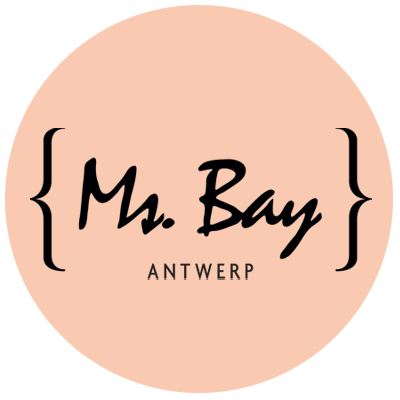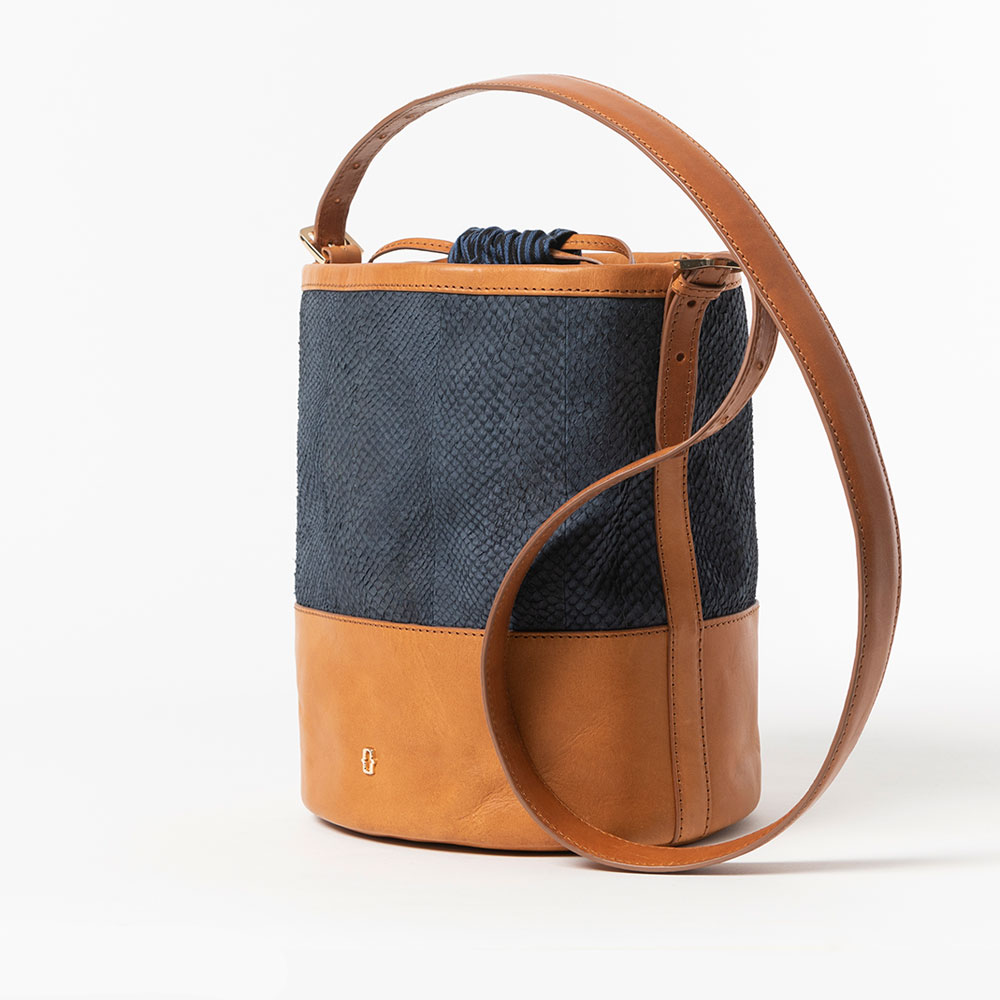Salmon leather:
From Food-waste to luxury leather
In the search for the perfect sustainable and durable material, we discovered fish-leather. Not only does it look amazing, but it is also a perfect eco-conscious alternative to regular leather. It is a waste product from the food industry, transformed into leather with minimal efforts and super strong.
Where does salmon leather come from?
Salmon leather an animal product made from the skins of salmon.
These skins are sourced from sustainable stocks, via Icelandic, Norwegian and Faroe Islands fishing fleets. All the skins are waste products from the seafood industry that would otherwise be discarded.
This natural byproduct is repurposed into a luxury leather by our tannery in Iceland. By tanning these skins they turn into a strong and beautifully textured leather.

Manual craft: Stretching wet salmon leather (photo by Nathalie Malric)
Is salmon leather strong?
Yes, it is a misconception that fish leather must be delicate and easy to tear. According to tests, fish leather can be up to 9 times stronger than lamb or cow leather of similar thickness. This is thanks to the alignment and length of the fibres; they are ‘crosshatched’ and very long. While fibres of mammals go in one direction and are much shorter.
Thanks to this alignment, the skin has a woven fabric-like texture and very strong while maintaining flexibility.
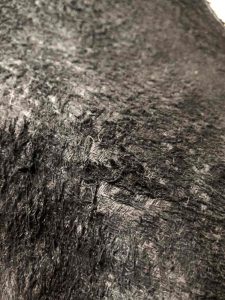
The cross-hatched woven structure of the fibres visible on the back of the leather
Why is salmon leather sustainable?
Salmon leather is a sustainable product in several ways;
- it is durable; it wears beautifully over time and with proper care can last a very long time, unlike most synthetic leather types.
- it is made from a waste product; only 43% of all fish resource is suitable for human consumption. The remaining is classified as fish waste. 30% of that waste is turned into animal feed. 70% is dumped, mostly at sea. By repurposing that waste, we limit pollution.
- the fish are sourced from sustainable fisheries in Northern Europe
- the tanning process runs off geothermal energy and the tannery re-uses every drop of water between eight and nine times in the production process.
- fish leather naturally has little colour, so it takes dyes very well; obtaining a better result with less dye and water. This also allows us to only use natural and non-polluting dyes.
- fish don’t have a fur and thus no hairs need to be removed. The scales can be removed mechanically (they are ‘brushed’ off). The entire toxic process of hair removal with lye and acid can be skipped.
- fishleather is biodegradable
Does salmon leather smell?
This is a question we often get! Luckily, the answer is no. Even though salmon leather starts off as regular fish skin, the tanning process changes it into a completely different product.
It smells very similar to any other natural leather but has a softer touch and more luxurious feel. So, nothing fishy about fish leather at all!
How should I care for a salmon leather product?
Salmon leather doesn’t require any special care. Just like any other leather, it is a natural material. Exposure to water, extreme heat or long periods of direct sunlight should be avoided.
We recommend treating your Ms. Bay product with some love; for more detailed information, head to our care-page.
How does salmon leather wear over time?
Our salmon leather is already removed of its scales. The texture you see is given to the skin by the pockets in which the scales sat. These pockets are the natural shape of the skin. They do not peel or tear. After some time of use, the leather may get a soft silk shine on places where it rubs against other surfaces a lot. This is similar to any other natural leather.
Due to the natural dying methods, dark leather may rub off some colour on lighter fabrics when it is brand-new. Treating it with a protective spray before use may help prevent this.
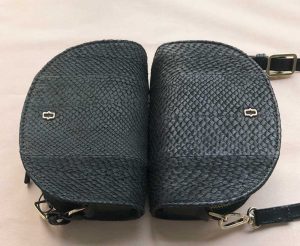
Salmon leather wear over time: New (left). After 2 years daily use (right)
What is the history of fish leather?
Making fish leather is an ancient craft historically used by many coastal cultures.
It used to be very common (nothing was wasted back in the days) but has almost entirely disappeared with the spread of now common cow- and goat leather.
Native Icelanders made their shoes from wolf fish leather, and reportedly measured distances by how many pairs of shoes would be worn out walking over the path! In Alaska water-resistant salmon leather was used for bags, parkas, and clothing. The Hezhe ethnic tribe from northeast China was also known as the “fish leather tribe” because of their traditional fish skin dress.
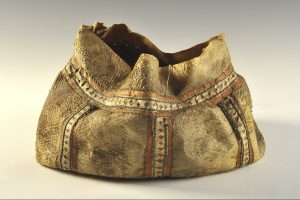
Vegetable Tanned leather:
Non-toxic and timeless
At Ms. Bay, we only use vegetable-tanned leather originating from Italy. No harmful chemicals were used in the process of making this leather.
No toxins hurting our craftsmen, no toxins released in nature.
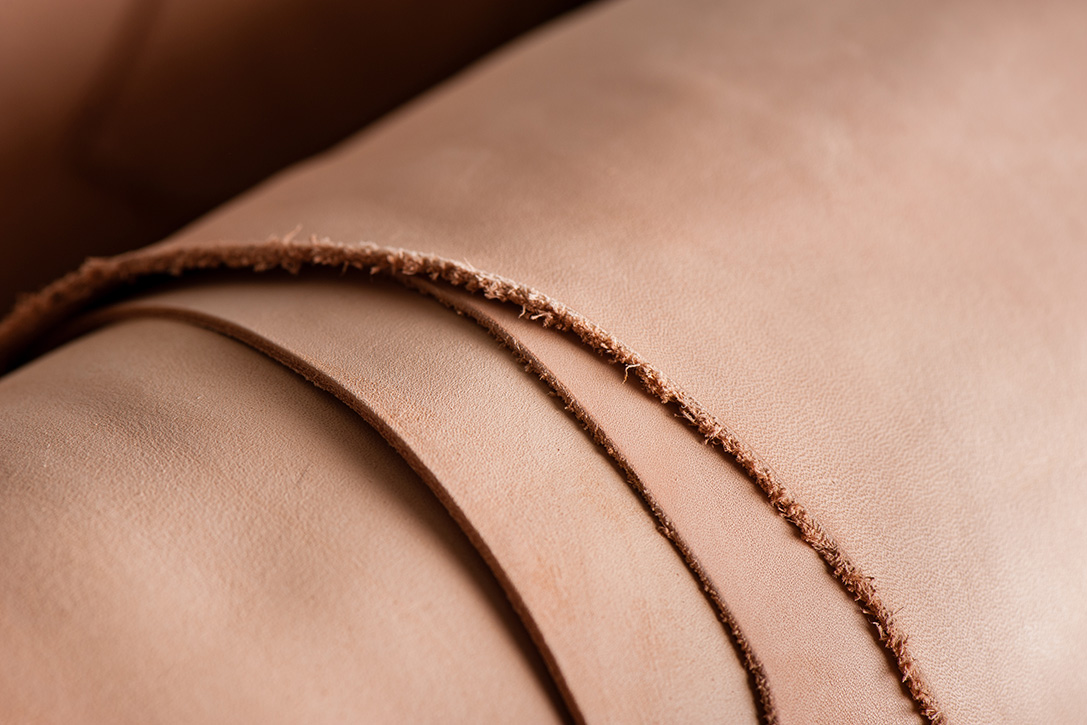
What does vegetable tanned mean?
The process of turning animal hides into leather is called tanning. This treatment makes the skin soft, flexible and prevents it from decomposing. Most leathers are tanned using a dangerous cocktail of chemicals, including chrome. This causes a risk for both the environment and human health. But as it is a much faster and cheaper method of tanning a hide, nowadays most leather used in both fashion and furniture industry is chrome tanned. Chrome tanned leather doesn’t change much over time but due to the harsh chemical treatment, it has a shorter lifespan.
The other technique is vegetable tanning, using only natural tannins. These are bio-synthetics instead of toxins and do not contain harmful chemicals such as chrome. It makes use of the acids found in certain trees, plants and fruits. Even though it requires a great deal of knowledge and time the result is a durable leather that grows a beautiful patina over time. Moreover, if you care for a vegetable-tanned leather product well, it can last you several lifetimes…
What are the advantages of vegetable tanned leather?
Leather has many pros and cons. To us, it is important to keep in mind the full sustainability cycle; the impact during manufacturing, during use and after life.
We will always prefer natural leather over chrome tanned.
This is because vegetable tanned leather generally;
- is biodegradable
- is tanned slower, deeper and gentler; not damaging the fibre and thus maintaining the natural strength of the leather.
- grows more beautiful over time
- has great durability (and long product-life!)
- scratches can be buffed out
- natural tannins don’t harm the environment
- is rich in colour
